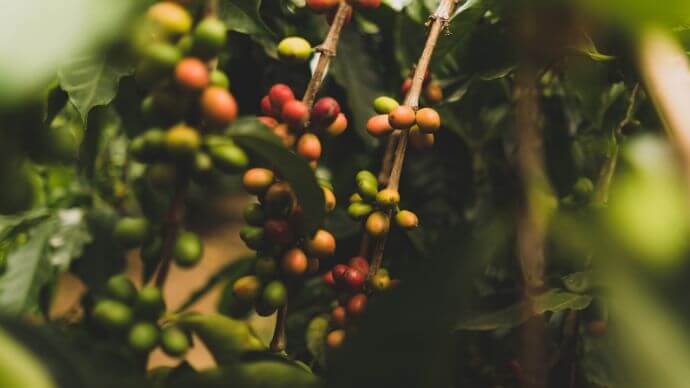Let’s just say it. Coffee is linked to poop more often than we’d like. Yes, it’s animal poop coffee and it exclusively tags itself as one of the most expensive coffees in the world.
But, the hefty price tag is just one obstacle you’ll have to overcome if you want to try the specialty coffee that the coffee snobs are raving about (no, not snobs; aficionados!). Because poop is involved in the process of making these expensive coffees that seem to be less bitter and absolutely divine.
Are you ready to unveil the mysteries of dung coffee and broaden your horizons of the standard coffee culture? Read on!
[su_note note_color=”#fcf7e6″]When you buy a product via the links on IlCappuccinoExpress.com, I may earn a small affiliate commission at no extra cost to you.[/su_note]
Contents
What kind of coffee is made from poop?
There are a few popular types of coffee around the world, made from poop. But don’t worry, you’re not actually drinking the poop. It’s the coffee that was in one way or another in contact with dung and the digestive enzymes of the animals. Here are the most popular/well-known animal shit coffee types:
- Civet cat, Indonesia
- Elephant, Thailand
- Bird, Brazil
- Coati, Peru
- Bat, Costa Rica
- Monkey coffee India
The Science of Dung Coffee: is it really that good?
The opinions whether this coffee is really worth the horrendous amount of money, are still divided. Some say it’s the best, smoothest, richest cup of joe they’ve ever tried. Others claim it tastes just like your usual well-brewed coffee.
But all agree on one thing: the animal shit coffee is definitely one of the strangest inventions of the coffee industry, there’s no doubt about it!
So, what is it all about? Is there really a whole science behind it? Why is makes it so special?
Well, if we omit the whole process of how this type of coffee is made, there are some key points that make this coffee what it is. In its core, it’s different from other coffees because of the process the beans have gone through before ending up in your cup.
It’s all about the fermentation process, which coffee cherries and beans are exposed to in the animal’s digestive tract. These include digestive enzymes, saliva, fluids, etc.
In fact, there are many who claim that dung coffee (especially Kopi Luwak) comes with a number of health benefits that extend beyond the plain classic coffee benefits:
- Doesn’t cause any stomach issues because it’s less acidic
- It can protect from individual cancers
- With its antibacterial properties, it should help to improve the health of your teeth with minimal staining (compared to standard coffee)
- Boosts your mood naturally
- Soothes painful headaches and migraines
Now, I haven’t found any official research that would fully support these claims, so I can’t say whether these are true or not. It may be a consequence of a popularity boom.
Anyway, the coffee beans are changed once they come into contact with the digestive system of the animals. They are less acidic than the standard coffee beans and they are less bitter. What’s more, the flavor is somewhat changed as well. In the long run, these factors can greatly contribute to your daily coffee habits.
But, the methods involved in the process of making this type of coffee aren’t always all sunshine and rainbows (see more below on caged civets). That’s why there has already been some experimentation on how to make the same quality of civet coffee but without all the civets.
Hopefully, the science and its experiments will one day give us the same level of coffee quality without the actual poop and animal cruelty. At the same time, the coffee will be more affordable and then we’ll be able to decide whether it really is a cup of wonder or not.
[su_youtube url=”https://www.youtube.com/watch?v=Ph6iWtIVIec” title=”animal poop coffee”]
6 Popular Animal Poop Coffee Sorts
Are you ready for the ride in territory yet undiscovered? It’s pretty intense, I can promise you that. While you must have already heard about a few animals that improve our daily cup, I bet one or two will be a complete surprise.
Let’s dive into dung coffee and go through the animals responsible one by one!
Kopi Luwak Coffee
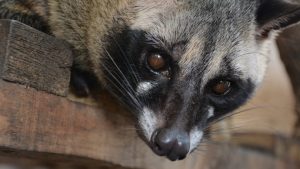
Also considered as the world’s most expensive coffee, Kopi Luwak or civet coffee is specialty coffee. Let’s face it; when browsing the web for this type of coffee, Luwak is probably the first hit. But it’s not really a cat shit coffee, as a civet is more of a raccoon-related animal than the actual cat.
What is so special about Kopi Luwak coffee?
Apart from the fact that it comes from animal poop, this type of coffee comes in extremely limited supply. According to Most Expensive Coffee website, the annual production of Luwak coffee is estimated at around 500 to 1000 pounds (250 to 500kg), whereas the average coffee, produced in Brazil reaches 1,8 million tons pounds, which is about 900-million-ton kg. That’s why kopi luwak comes with such a hefty price tag.
The process of production is the most important aspect of this type of coffee. Let’s have a look below, how this coffee is created; from coffee cherries to the final product in your bag.
How is Kopi Luwak created?
Kopi is an Indonesian word for coffee. Luwak is the local name of the Asian palm civet. These little furry beasts normally feed on the ripest cherries they can find, even though that’s not their only food source.
According to producers of animal Luwak coffee, the beans improve through two factors;
- the luwak’s selection of the best ripe cherries, and
- the digestion process itself.
The coffee cherry moves through the intestines of the civet, but the beans are not digested. They pass a unique process of fermentation and after a day (more or less), they leave their host, civet, and come out in clumps. Then they are harvested, washed, dried, sorted, roasted, and packed in pretty little bags the consumers buy.
What does civet cat coffee taste like?
It’s difficult to be completely objective when it comes to taste. The thing is, kopi luwak coffee is a generalized name for all sorts of coffee beans, which means they differ from one another. But in general, the coffee is
Smooth, with a complex aroma. Definitely not bitter, but nutty and rich, with a hint of caramel and chocolate.
Even though, kopi luwak is considered more of a novelty than an actual specialty. Specialty Coffee Association of America claims it just tastes bad. Tim Carman’s review for the Washington Post seems to agree. In other words,
It tasted just like…Folgers. Stale. Lifeless. Petrified dinosaur droppings steeped in bathtub water. I couldn’t finish it.
Still, there are people who praise it to the moon and back, even though many critics say it’s simply a bad coffee. As one critic concluded, it’s more about how rare the coffee is and how unique than the actual mind-blowing taste.
The controversy of kopi luwak coffee
A fascinating new type of coffee, it’s no wonder that civet coffee has taken the coffee world by storm. You can be severely disgusted by it, but then deep down you’re still incredibly curious and want to know what it’s all about. Well, the popularity of this coffee has taken its toll with some severe side effects.
The civets are hunted and locked in captivity. No, not like in a Zoo, more like as a medium in a production chain. They are there to eat and shit coffee. Nothing else. So much about animal welfare.
Apart from the fact that these animals are loners in the wild, their daily menu extends far beyond plain unripe coffee cherries day after day. While they only choose the ripest and tastiest coffee fruits, they also eat insects and other fruits.
In any case, the captivity does them no good, as they suffer from poor living conditions and poorer food. Have I mentioned that they’re actually wild animals forced to eat coffee?
The original method was based on the farmers picking poop around the plantation and the original method was humane, even though you might think it a bit weird. After all, someone looked at civet droppings and thought to himself: look at that, let’s make coffee!
Where to buy Kopi Luwak?
You can easily get Kopi luwak coffee Amazon retailed. You can probably get it in some specialized coffee shops, specialized online retailers, like Volcanica coffee’s free-range Luwak coffee, or from a friend who’s visiting Indonesia.
Whenever you decided to buy it, make sure to be super attentive. The majority of all kopi luwak coffee is somewhat fake (think force-fed civets). If you’re trying to get the real deal (wild civets and all), think again. There’s no actual labeling on the coffee, so you can never know 100% for sure if your beans are authentic and cruelty-free, according to this National Geographic article.
Well, and the civet cat coffee price? Ridiculous! You’ll pay somewhere between $35 to $80 per cup. One pound of beans can cost up to $600!
[su_box title=”Fun Fact” style=”soft” box_color=”#6f3d45″]The origin of animal Luwak coffee is linked to the Indonesian coffee production back in the early 18th century. The Dutch prevented the native farmers from using the coffee for themselves. But the locals didn’t cave in; they still wanted to have a taste of what they were farming. In their stubbornness, they found out that a furry animal was eating the coffee and pooping it out. They started collecting the droppings from the Asian palm civet, cleaning and roasting them, which resulted in their favorite cup of fresh brew. The Dutch found out about it and it soon became a rare specialty. Its price hasn’t changed through the centuries; it was expensive even in the colonial era.[/su_box]
Bird Poop Coffee
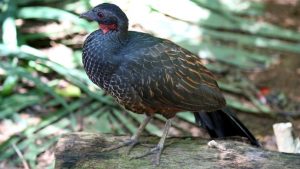
What looked like could be a disaster for a coffee farmer and plantation owner back in 2009, turned out to be a goldmine with no end in sight. The birds ate his coffee but then showed him a way out of the crisis.
Meet Henrique Sloper and his farm in Camocim, Brazil. He really just wanted to make organic and high-quality coffee. That was 10 years ago. Now he makes that top-quality coffee, but not exactly as he’d planned it.
What is Bird Poop Coffee?
As you might have guessed, bird coffee is another exclusive sort of coffee on the list. This time coming from the country that produces the most coffee in the world- Brazil.
While it may not seem, there’s more to Brazil’s coffee production than just a bulk-produced crop. Brazil has decided to take a step further and please the world with another specialty: Jacu bird coffee! Okay, it was not the whole of Brazil; only this guy and his hacienda.
The Jacu birds are herbivores and they somehow found the ripest coffee cherries of Henrique to be the sweetest to their taste. And that’s how it all started. Well, to be honest, the guy was desperate when he first found out that flocks of birds were nibbling on his coffee and destroying his crop. Not anymore!
Some call this coffee one of the most exclusive there is.
How is Bird Shit Coffee made?
The process is very simple and straightforward. Remember civet beans? There you go. They eat the cherries, they digest them, they shit them. People collect them, clean them, roast them, deliver them, and charge a lovely significant price for this coffee.
Now, the process of harvesting and learning is a long one and it takes extra labor and skill to make every single coffee bean useful and ready for the next step.
What’s the taste of Jacu Bird Coffee?
According to the testimonials of those who tried the coffee, this specialty fragrant drink is
dense and creamy with a delicate balance of flavors. Supposedly it’s chocolatey with fruity notes. It balances a sweeter taste with an acidic base without any bitterness.
Where to buy Bird Coffee?
You can get it here. But make sure to sit down when looking for the price. It’s very very expensive. The bird’s natural selection of each coffee cherry adds up to the whole equation of diversity and quality. In other words, it’s worth 7 times more than its organic original rival (that’s poop-free).
Elephant poop coffee Thailand
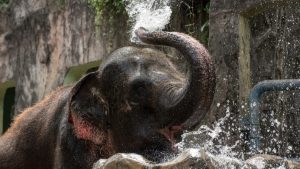
But then the world’s most expensive coffee may not come from civet cats, but from elephant dung from Southeast Asia. You’ve heard me! If you thought civet poop may not be worthy of your cup, would Thai elephant coffee be any better? Black Ivory Coffee’s creator Blake Dinkin can tell you all about it!
What is so special about Black Ivory coffee?
Well, the fact that makes it special is that it’s quite unique. Just like with kopi luwak, the process is the same, but the animal is different. This type of coffee is considered extremely luxurious since it’s produced in extremely limited supply.
The difference from civet cat coffee is that not all beans are recovered once they leave their host (namely, the elephant). These large beasts east the coffee cherries and some of them are chewed by them, others lose their original form, get lost in the bush, and are wasted in any other matter. It’s said that 72 pounds (33kg) of coffee cherries are needed to produce two pounds (1kg) of the final product. Did I mention that there are only 150 kilograms of Black Ivory coffee produced on a yearly basis?
There’s quite some difference when talking about Black Ivory coffee VS kopi luwak. Even when it comes to the taste and reviews. But more on that later. Let’s talk about the main question now: Is coffee made out of elephant poop? Let’s see more about that in the next section.
How is Black Ivory made?
Thai Arabica cherries are handpicked and then brought to the elephants. The Black Ivory coffee company assures that each meal, prepared for the individual elephant contains carefully planned mixture of various foods to provide the elephants with their favorite foods and nutrition at the same time.
And then? The fermentation process starts. Similar to kopi luwak, the digestive enzymes of the elephants break down coffee’s protein. The beans are, along with other foods in the elephant’s stomach, digested within 15 to 70 hours, says Wikipedia.
When they see the sunlight again, the beans are handpicked, washed, sundried, hulled, sorted, and roasted. Black Ivory company boasts the fact that they roast after they receive the order and not prior to ensure the maximum quality of the final product.
What’s the taste of elephant dung coffee?
If you browse reviews and testimonials, this coffee is rated higher than the average kopi luwak. It’s said to be very smooth but without any bitterness, which we’re used to in regular cups of coffee.
In other words, elephant coffee has a mild cherry flavor with notes of cacao or chocolate (to each their own), spice, and even tobacco or leather. It’s quite delicate; some say it resembles tea more than coffee when it comes to its complexity.
Where to buy Black Ivory Coffee?
That’s a good question. Since it’s so rare, it seems difficult to get your hands on this type of coffee. Amazon may have it in stock sometimes, but you’ll have to check to be sure. Otherwise, you can get it directly from the Black Ivory Coffee website (again, when available).
And the elephant poop coffee price? We’re talking about more than $1,000 per one kilo of elephant dung coffee.
[su_box title=”Fun Fact” style=”soft” box_color=”#6f3d45″]Black Ivory coffee is produced in the Golden Triangle Asian elephant foundation. A small percent of the sales is donated to the elephant foundation which funds the animal’s health care. And, the coffee cherries have no negative impact on the animal’s health, say veterinary tests.[/su_box]
Coati Poop Coffee Peru
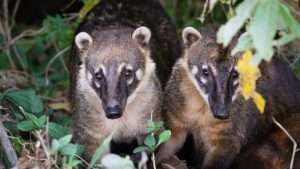
As you were able to see up to now, all of these specialty coffee sorts compete for the title of the world’s most expensive coffee. Coati coffee is no different. It’s also rare and quite desirable with its limited supply.
Let’s have a look at the Misha coffee and what it is all about. It’s more than just another coffee with a hefty price tag. Or is it?
What is Coati Poop Coffee?
Apart from the fact that this is another world’s most expensive coffee on the list, capis coffee is another animal coffee, coming all the way from South America again, this time from Peru.
You have to thank the coatis, small raccoon-like animals for this coffee. They’re also called uchunari or mishasho by the locals. The coffee is called Misha but we know it as either coati coffee or capis coffee. The little beasts nibbling on arabica coffee and pooping it out have long noses and fluffy tails.
Anyway, this extremely expensive animal specialty comes from a central province in Peru called Chanchamayo. You can read more about the project here.
How is Coati Poop Coffee made?
After eating the sweetest and the ripest cherries (as many other animals on the list), the coffee beans pass through the digestion tract and are combined with other foods the animal eats, making it more special, desirable, and aromatic.
The idea behind coati and kopi luwak is more or less the same. The only difference is animal cruelty. I can’t say for sure, but I haven’t been able to find any information online that coatis are treated the same as civet cats.
What I can tell you is that the coatis living on the coffee farm are domesticated and raised on-site since they were small. They’re free to move around the countryside and are given a few meals of coffee per week. According to certain sources, giving coatis too much coffee would produce anemic animals since the sweetness of coffee eliminates their red blood cells.
What’s the taste of Coati Coffee?
Due to the digestive enzymes and peptides, and amino acids, they say coati coffee
has a less bitter coffee with an intense aroma. It’s complex because of the other foods these little creatures eat and it produces an unusually long aftertaste. Sweet with notes of flowers, chocolate, and dried fruit.
Where to buy Coati Coffee?
You’re actually able to get Misha coffee from Amazon but in very short supply. If you’re ever in Peru, take a tour to Chanchamayo Coffee plantations, taste some, and bring the rest home with you.
Prepare to open your wallet as wide as possible; I’ve found information that coatis only poop up to 9 grams of coffee a day. That means the average production of this coffee sums up to about 450 kg per year.
Yes, but the coati coffee price? Well, it is quite expensive. Very expensive. One kilo of Misha coffee can cost up to $1,400.
[su_box title=”Fun Fact” style=”soft” box_color=”#6f3d45″]This type of coffee has been already popular since the 17th century! It was for reserved for the highest social circles only![/su_box]
Wild Bat Poop Coffee
Let’s get really strange. Yes, let’s talk about wild bat shit coffee. Believe it or not, there is such a specialty coffee and it’s as rare as it can be.
The bat beans. Delivered to your cups all the way from Costa Rica.
What is bat poop coffee?
Let’s be clear about one thing: this type of animal coffee doesn’t belong to the poop category. Because the bats don’t swallow the coffee beans. There’s no poop involved in the process of this coffee. After all, they are a bit small for that. But there are enzymes and all that!
The bat coffee comes from the species of bat called Jamaican fruit bat (Artibeus Jamaicensis), living in Costa Rica, namely around the Brunca region.
How is wild bat coffee made?
The bats find the ripest and tastiest coffee cherries. They love their fruits, so it has to be the best! Now, they don’t stuff the entire cherry into their mouths. Instead, they tear the outer layer of the cherry with their pointy sharp teeth and lick the inner part to get to the sugary pulp and mucilage.
When they’re done, they leave the coffee cherry and look for another. The fruit is now wide open and full of bat’s digestive acid. Combined with the natural sunlight and warmth, the berries are left to dry naturally for as long as possible. It’s this whole process that makes the coffee as unique as it is.
What’s the taste of Bat Coffee?
Another coffee with rare testimonials, bat coffee has
Fruity and floral taste. Smooth and sweet. With delicate acidity.
The best way to prepare it? Get a decanter, a pour-over, if you will (I’ve been told that Hario V60 works best, but feel free to try with other pour-over coffee makers).
Where to buy Bat Coffee?
It’s not as easy as you may think. You can either book your next holiday in Costa Rica and get it straight from the source. Or, you can browse online. I know that Amazon had one sort of Wild Bat Coffee, but without any reviews.
Keep in mind that bat coffee is still a rarity that can’t easily be found.
Monkey Poop Coffee
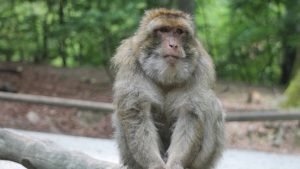
Okay, I may have lied a little. This isn’t actually a monkey dung coffee, but it still involves the monkey’s digestive process, even though not all of it. Still, it’s a new and fascinating phenomenon. I’m actually curious to discover who was the first that decided to pick up coffee cherries and make a cup of coffee from them!
What is monkey poop coffee?
Let’s clear something up: there is no monkey poop involved. This one’s also made differently from other coffees on the list. It happens in Chikmagalur in India. The monkeys live in the forests that sometimes border the coffee plantations.
How is monkey coffee made?
Now, monkey coffee is another specialty coffee, a rare type that comes from the coffee cherries, chewed by the Rhesus monkeys in India. Just like the civet cat, the monkeys always select only the ripest, sweetest, and best coffee cherries. They pick them, chew them slowly, and spit the seeds (coffee beans) on the ground.
The workers pick these chewed spits of coffee beans, wash them, process them, and dry them. What follows is the roasting process and then selling the coffee.
Because of the monkey’s saliva, the coffee tastes different than your usual cup of joe. You can prepare them just like any other coffee, but the taste may surprise you. It’s the saliva that causes the enzymes in the coffee beans to break down, consequently changing the flavor of the coffee. What’s more, you can also see tooth marks on the coffee beans.
What’s the taste of monkey spit coffee?
I haven’t found many testimonials online about the taste, but this article from the Washington Times may convince you. One of the testers happily reported that monkey coffee is not like any other animal-processed coffee. Instead, it’s
sweet and complex, with hints of vanilla, citrus, nuts, and chocolate. It’s heavy-bodied with rounded acidity, but without bitterness.
Where to buy monkey Coffee?
Since it’s relatively new to the world’s coffee market, monkey coffee isn’t always available. What’s more, it’s also difficult to find.
If you’re curious enough to give it a try, you’ll have to stay alert and grab it when the opportunity shows.
Yes, but the monkey coffee price? Well, think about $7 per cup of brewed coffee. This exotic sort retails at about $320 per pound!
Animal Poop Coffee: a few last words
That was quite a ride. The most special delicacies are sometimes the most incredibly strange things our wildest imagination can’t always produce.
Now, this coffee can be at the top of the most expensive coffees in the world and I can understand why. There’s a ton of labor involved and animals don’t really follow the work plan on a daily basis (apart from civets and they are forced to do so).
Anyway, you’ve seen it all: the chewing monkeys, pooping Coatis, suffering Civets, nibbling bats, elephants, to Jacu bird. So, what will be your next vacation destination? What’s your favorite animal that poops coffee beans?
I’ve been to some of these places and I couldn’t bring myself to trying this coffee, no matter how exotic it is. Could you? How about poop tea instead?
Let us know below if you have any experience with these dung coffee types. Would you be willing to pay a ridiculously high price for such an extraordinary cup of coffee?
[su_divider top=”no” style=”double” divider_color=”#cbcbcb” link_color=”#ffffff”]
Recommended Reading
Intro to Coffee: Where Do Coffee Beans Come From?
How to Make Espresso on the Stove?
Best Colombian Coffee Brands: All You Need to Know
Best Alcoholic Coffee Drinks To Try

